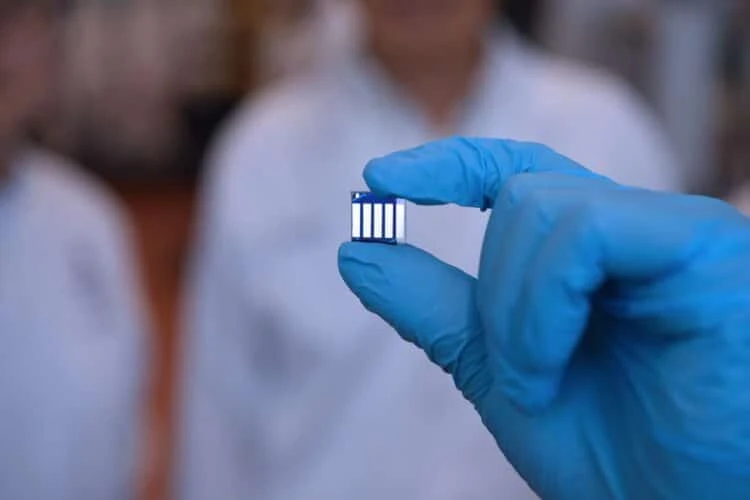
Brisbane, QLD — Researchers at the University of Queensland (UQ) have set a new world record in solar technology, achieving a certified solar cell efficiency of 16.65 % using tin halide perovskite (THP) materials.
Led by Professor Lianzhou Wang, the breakthrough was achieved by a team from UQ’s School of Chemical Engineering and the Australian Institute for Bioengineering and Nanotechnology. The result surpasses the previous best for THP solar cells by nearly a whole percentage point — a significant leap in a field where progress is typically slow and incremental.
“It might not seem like much, but this is a giant leap in a field that is renowned for delicate and incremental progress,” said Professor Wang. “The reading is in line with many silicon-based solar cells currently on the market but with the potential to be cheaper and quicker to manufacture. We are thrilled with the record and proud to be advancing cost-effective renewable energy solutions.”
This is not the first time Professor Wang’s lab has made headlines. Five years ago, the same group set a global benchmark for power conversion efficiency using quantum dot technology.
Dr Dongxu He, a member of the research team, noted that many of the insights and techniques developed in their 2020 quantum dot research informed their success with THP thin-film solar cells.
“There is great commercial potential in THP solar cells because perovskite devices are more sustainable to produce than silicon-based solar cells,” Dr He said. “The benefit of THPs is that we’re working with eco-friendly tin rather than the toxic lead used in most perovskite solar cells, making them safer for use around the home.”
Historically, THP solar cells have faced efficiency issues due to the low quality of fast-crystalline thin films used in their manufacture. However, Dr Peng Chen explained that the team overcame this challenge by adding caesium ions to enhance the microstructure and minimise defects in the THP layer.
“This allowed us to reach a record level of efficiency while still meeting strict environmental standards,” Dr Chen said. “I believe we’ve found a formula that will only continue to improve.”
Professor Wang welcomed competition from other researchers in the field, saying that each new advance contributes to better and more sustainable solar technology.
With greater efficiency and flexibility, THP solar cells could soon become a viable choice for residential solar systems — both outdoor and indoor.
“Beyond solar panels, the techniques we’ve developed could also be applied to other high-performance perovskite-based devices such as lasers, photodetectors, and transistors,” Professor Wang added. “There’s even potential for lightweight THP cells to power electric aircraft — the sky is the limit.”